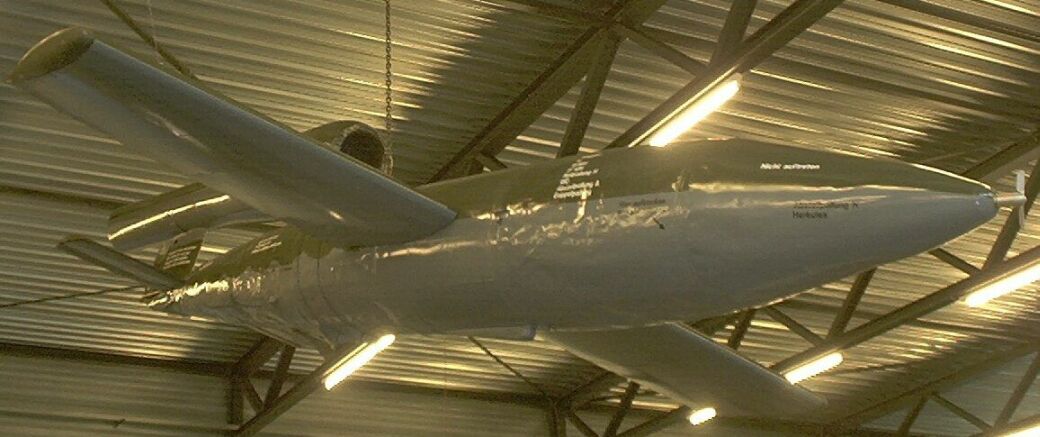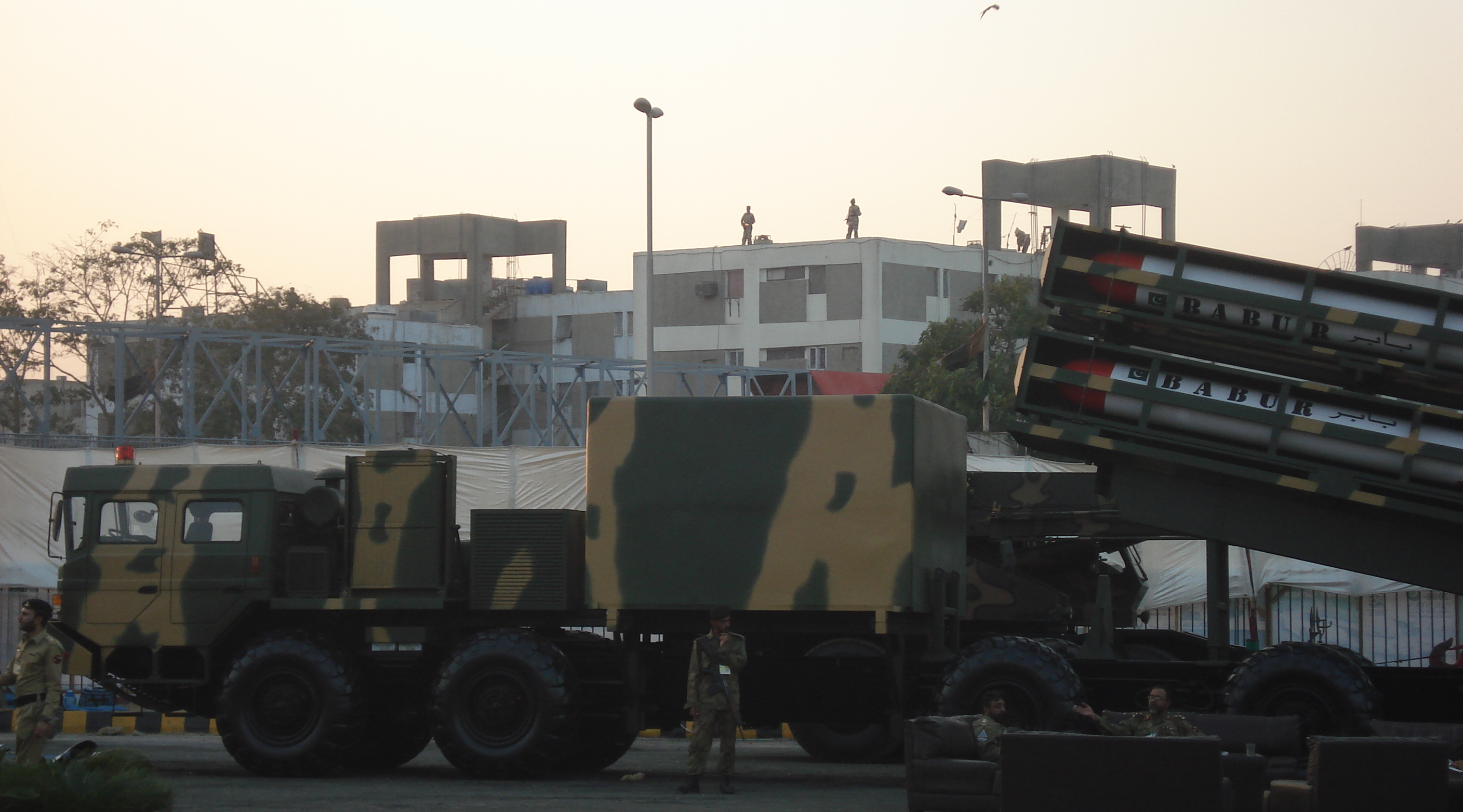|
AVMT-300
The AV-TM 300 Tactical Missile or MTC-300 (Míssil Tático de Cruzeiro) is a Brazilian cruise missile developed by Avibras for the Astros II system. Nicknamed ''Matador'' ("killer"), it is projected to be a less expensive alternative to the American Tomahawk (missile). The missile is equipped with a central computer that combines a Ring laser gyroscope, connected to an active GPS navigation device that uninterruptedly supplies positioning information for course correction. Apparently there also will be a naval version called X-300. The missile can use a single warhead of 200 to 500 kg high explosive or cluster munition warhead with 64 submunitions for anti-personnel or anti-tank targets. Development The first version of the missile was created in 1999, however, the development of the missile officially started in September 2001. Eventually, the original specifications underwent a major modification, including removal of the retractable wings and addition of composite materia ... [...More Info...] [...Related Items...] OR: [Wikipedia] [Google] [Baidu] |
Cruise Missile
A cruise missile is a guided missile used against terrestrial or naval targets that remains in the atmosphere and flies the major portion of its flight path at approximately constant speed. Cruise missiles are designed to deliver a large warhead over long distances with high precision. Modern cruise missiles are capable of travelling at high subsonic, supersonic, or hypersonic speeds, are self-navigating, and are able to fly on a non-ballistic, extremely low-altitude trajectory. History The idea of an "aerial torpedo" was shown in the British 1909 film ''The Airship Destroyer'' in which flying torpedoes controlled wirelessly are used to bring down airships bombing London. In 1916, the American aviator Lawrence Sperry built and patented an "aerial torpedo", the Hewitt-Sperry Automatic Airplane, a small biplane carrying a TNT charge, a Sperry autopilot and a barometric altitude control. Inspired by the experiments, the United States Army developed a similar flying bomb cal ... [...More Info...] [...Related Items...] OR: [Wikipedia] [Google] [Baidu] |
Astros II
Astros II (Artillery Saturation Rocket System) is a self-propelled multiple rocket launcher produced in Brazil by the Avibras company. It features modular design and employs rockets with calibers ranging from 127 to 450 mm (5–17.72 inches). It was developed on the basis of a Tectran VBT-2028 6×6 all-terrain vehicle for enhanced mobility based on Mercedes-Benz 2028 truck chassis. Overview A full Astros system includes 1 wheeled 4×4 Battalion level Command Vehicle (AV-VCC), which commands 3 batteries, and a series of 4x4 and 6×6 wheeled vehicles. Each battery consists of: * 1 wheeled 4×4 Battery-level Command vehicle (AV-PCC) * 1 wheeled 6×6 Radar Fire Control vehicle (AV-UCF) * 6 wheeled 6×6 Universal Multiple Rocket Launchers vehicle (AV-LMU) * 6 wheeled 6×6 Ammunition Resupply vehicles (AV-RMD) * 1 wheeled 6×6 Field repair/workshop vehicle (AV-OFVE) * 1 wheeled 4×4 Mobile Weather Station vehicle (AV-MET). In the older version of the system, the fire control v ... [...More Info...] [...Related Items...] OR: [Wikipedia] [Google] [Baidu] |
Cruise Missile
A cruise missile is a guided missile used against terrestrial or naval targets that remains in the atmosphere and flies the major portion of its flight path at approximately constant speed. Cruise missiles are designed to deliver a large warhead over long distances with high precision. Modern cruise missiles are capable of travelling at high subsonic, supersonic, or hypersonic speeds, are self-navigating, and are able to fly on a non-ballistic, extremely low-altitude trajectory. History The idea of an "aerial torpedo" was shown in the British 1909 film ''The Airship Destroyer'' in which flying torpedoes controlled wirelessly are used to bring down airships bombing London. In 1916, the American aviator Lawrence Sperry built and patented an "aerial torpedo", the Hewitt-Sperry Automatic Airplane, a small biplane carrying a TNT charge, a Sperry autopilot and a barometric altitude control. Inspired by the experiments, the United States Army developed a similar flying bomb cal ... [...More Info...] [...Related Items...] OR: [Wikipedia] [Google] [Baidu] |
Noor (missile)
The Noor ( fa, نور) is a long-range anti-ship cruise missile manufactured by Iran. The missile is in primary service with the Iranian Navy. The missile is a reverse engineered Chinese C-802 anti-ship missile. History Iran was the first export customer of Chinese C-802 missiles. The contract was signed in 1995 but was cancelled due to U.S. pressure after 60 missiles had been delivered. After that, Iran started a program to reverse engineer the C-802. It is unknown when the programme was finished, but in 2000 and early 2001, Iran tested an upgraded C-802 missile during Unity-79 wargames. Officials said that the range of the missile is increased from . The missile is powered by Toloue-4, an Iranian version of the French Microturbo TRI 60 engine. In January 2004, Iran announced that it has started manufacturing the DM-3B mono pulse radar for the Noor missile. According to Iranian officials, DM-3B is a millimeter-wave active radar used in the last stage of missile flight to ... [...More Info...] [...Related Items...] OR: [Wikipedia] [Google] [Baidu] |
3M-54 Kalibr
The 3M-54 Kalibr, (Калибр, caliber), also referred to it as 3M54-1 Kalibr, 3M14 Biryuza (Бирюза, turquoise), (NATO reporting name SS-N-27 Sizzler and SS-N-30A) is a family of Russian cruise missiles developed by the Novator Design Bureau (OKB-8). There are ship-launched, submarine-launched and air-launched versions of the missile, and variants for anti-ship, anti-submarine and land attack use. Some versions have a second propulsion stage that initiates a supersonic sprint in the terminal approach to the target, reducing the time that target's defense systems have to react, while subsonic versions have greater range than the supersonic variants. The missile can carry a warhead weighing up to of explosive or a thermonuclear warhead. Design The missile is a modular system with five versions: two anti-shipping types, one for land attack and two anti-submarine types. The missile is designed to share common parts between the surface and submarine-launched variants but ea ... [...More Info...] [...Related Items...] OR: [Wikipedia] [Google] [Baidu] |
Persian Gulf (missile)
Khalij Fars ( fa, موشک خلیج فارس, "Persian Gulf") is an Iranian single-stage solid-propellant, supersonic anti-ship quasi ballistic missile with a range of 300 km based on the Fateh-110 missile. It is equipped with a 650 kg explosive warhead and an interception evading guidance system. The missile was unveiled in February 2011 when the Commander of the Islamic Revolutionary Guards Corps, Major General Mohammad Ali Jafari, announced that it is being mass-produced. The Iranian Fars News Agency released a footage of the missile hitting a target ship successfully. The missile was first tested during the Great Prophet III naval wargames in 2008. There have been two other publicized tests of the missile. One occurred in July 2011 and the other in July 2012. The latter test also showed footage taken by the missile's electro-optical seeker locked onto its target. Features and capabilities The missile has an operating range of . It is a single-stage, solid-fuel- ... [...More Info...] [...Related Items...] OR: [Wikipedia] [Google] [Baidu] |
P-800 Oniks
The P-800 Oniks (russian: П-800 Оникс; en, Onyx), also known in export markets as Yakhont (russian: Яхонт; en, ruby), is a Soviet / Russian supersonic anti-ship cruise missile developed by NPO Mashinostroyeniya as a ramjet version of P-80 Zubr. Its GRAU designation is 3M55, the air launched Kh-61 variant also exists. The missile has the NATO codename SS-N-26 " Strobile". Development officially started in 1983, and in the 1990s the anti-ship missile was tested on the Project 1234.7 ship. In 2002 the missile passed the whole range of trials and was commissioned. It is reportedly a replacement for the P-270 Moskit, and possibly also of the P-700 Granit. Description The missile is carried in flight by aerodynamic lift. The solid-propellant booster is located in the ramjet's combustion chamber and is ejected by the airflow after it has burned out. Advantages *Over-the-horizon firing range *Full autonomy of combat use ("fire and forget") *A set of flexible ("low-profi ... [...More Info...] [...Related Items...] OR: [Wikipedia] [Google] [Baidu] |
Hyunmoo-3
The Hyunmoo-3 is a cruise missile fielded by the South Korean military designed by Agency for Defense Development (ADD). The name Hyunmoo () comes from a mythical beast described as the "Guardian of the Northern Sky", perhaps hinting North Korea. Design and development As a signatory of the multilateral Missile Technology Control Regime, South Korea agrees to refrain from importing a non-indigenous ballistic missile with a warhead larger than 500 kg, or a range of more than 300 km. In addition, a bilateral agreement between the ROK and US limits indigenous South Korean produced missiles to no more than in range, and warheads no larger than . (In September 2017, the presidents of the ROK and the US agreed "in principle" to lift these bilateral limits, increasing the possibility of a longer-range, more powerful Hyunmoo-4 in the future.) Therefore, a heavy emphasis was put on developing long-range cruise missiles by the South Korean government. With the introduction of H ... [...More Info...] [...Related Items...] OR: [Wikipedia] [Google] [Baidu] |
Brazilian Air Force
"Wings that protect the country" , colours = , colours_label = , march = Hino dos Aviadores , mascot = , anniversaries = 22 May (anniversary) 22 April (fighter aviation day) , equipment = , equipment_label = , battles = Contestado War Lieutenants RevoltsConstitutionalist WarWorld War II Lobster WarTrês Passos GuerrillaCaparaó Guerrilla Araguaia Guerrilla WarOperation Traira , decorations = , battle_honours = , battle_honours_label = , flying_hours = , website = , commander1 = President Lula da Silva , commander1_label = Commander-in-Chief , commander2 = Paulo Sérgio Nogueira de Oliveira , commander2_label = Minister of Defence , commander3 = Carlos d ... [...More Info...] [...Related Items...] OR: [Wikipedia] [Google] [Baidu] |
BrahMos
The BrahMos (also designated as PJ-10)India Displays Big Missiles at Defense Show . ''Aviation International News''. 19 April 2018. is a medium-range stealth supersonic cruise missile that can be launched from submarine, ships, airplanes or land, notably being the fastest supersonic cruise missile in the world at the time of introducing. It is a joint-venture between the |
BGM-109 Tomahawk
The Tomahawk () Land Attack Missile (TLAM) is a long-range, all-weather, jet-powered, subsonic cruise missile that is primarily used by the United States Navy and Royal Navy in ship and submarine-based land-attack operations. Under contract from the U.S. Navy, the Tomahawk was designed at the APL/ JHU in a project led by James Walker near Laurel, Maryland, and was first manufactured by General Dynamics in the 1970s. It was intended to fill the role of a medium- to long-range, low-altitude missile that could be launched from a naval surface warfare platform, and featured a modular design accommodating a wide variety of warhead, guidance, and range capabilities. At least six variants and multiple upgraded versions of the TLAM have been added since the original design was introduced, including air-, sub-, and ground-launched variants with conventional and nuclear armaments. In 1992–1994, McDonnell Douglas Corporation was the sole supplier of Tomahawk Missiles and produced Bloc ... [...More Info...] [...Related Items...] OR: [Wikipedia] [Google] [Baidu] |
Babur (cruise Missile)
Babur (Urdu: بابر; named after the first Mughal Emperor Zahir-ud-Din Babur), military designated: Hatf-VII, ''Translit'': ''Target–7'', is a Pakistani medium range turbojet powered subsonic cruise missile that can be launched from land or underwater seaborne platforms. The missile was first tested in 2005 and is widely believed to have entered service with the Pakistan Army in 2010, and the Pakistan Navy in 2018. Development history Pakistan claims to have developed the Babur in response to alleged reports that India was planning to acquire Patriot missiles from the US, in order to set up a ballistic missile defense system to counter Pakistan's arsenal of ballistic missiles. Babur is the first cruise missile to be developed and designed by Pakistan. Origins Babur has been at the center of speculation regarding its origins and development. While, some analysts have pointed out similarities of the missile with Chinese and American designs, namely the DH-10 and Tom ... [...More Info...] [...Related Items...] OR: [Wikipedia] [Google] [Baidu] |
.jpg)

.jpg)





